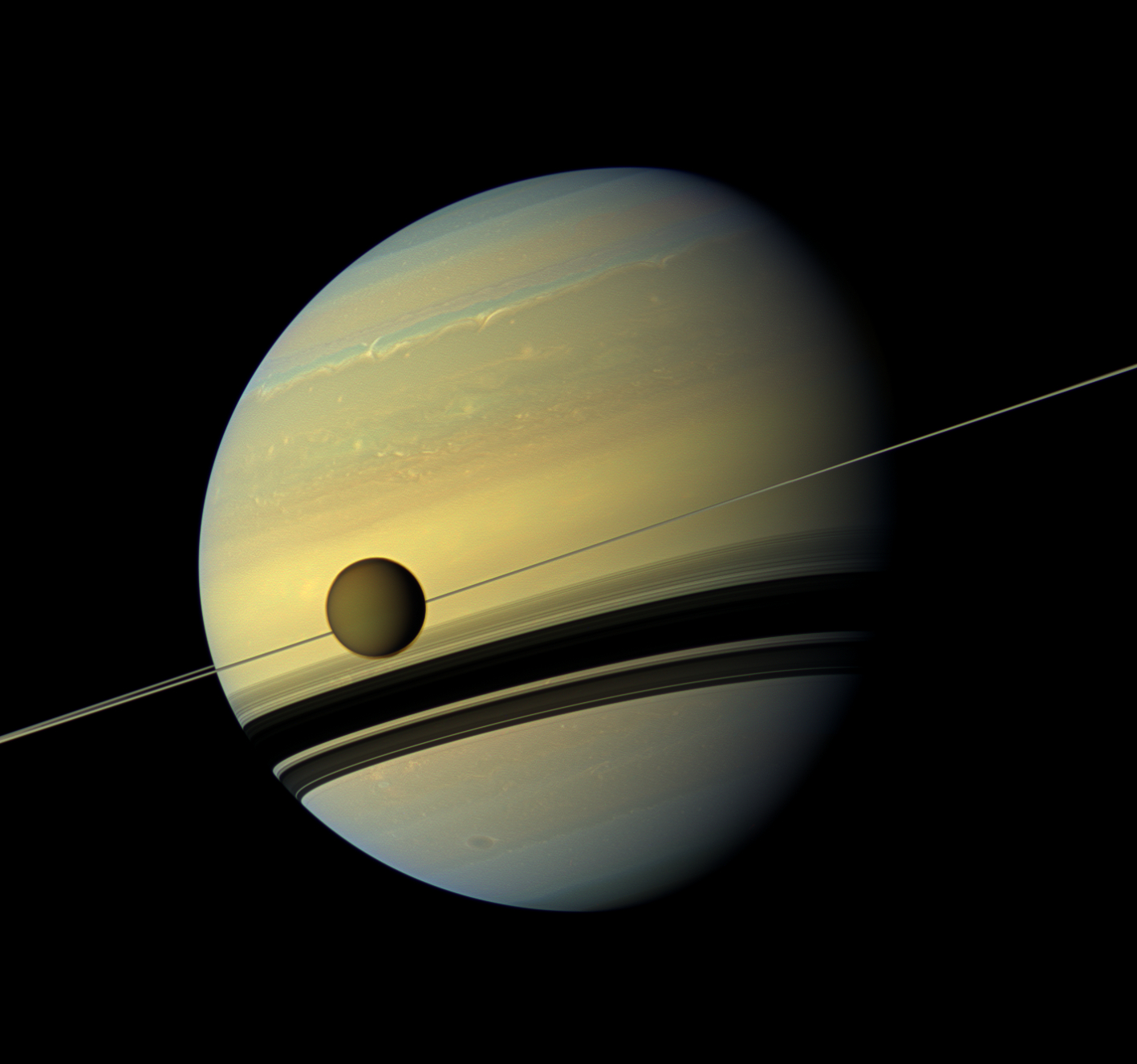

One man’s garbage is another man’s treasure. Or in this case, one space telescope’s extra data is another researcher’s gold mine.
In a new study published in the journal Science Advances on July 28, scientists detail evidence of a chemical compound called vinyl cyanide in the atmosphere of our favorite moon of Saturn, Titan. Vinyl cyanide’s presence is intriguing because in 2015, researchers from Cornell University identified the compound as a potential alternative to components called phospholipids. Here, on our warm, rocky planet, we Earthlings have phospholipids in our cell membranes, but on cold alien worlds, vinyl cyanide might—just might—serve the same purpose, providing cells with a basic structure and defensive layer.
And when we say cold alien worlds, we mean it. Titan—if you’re thinking of booking a vacation there—has a brisk average surface temperature of -290 degrees Fahrenheit.
Maureen Palmer, a NASA researcher and lead author of the new study, first started digging through data from the renowned Atacama Large Millimeter/submillimeter Array (or, ALMA) three years ago as an undergraduate researcher in NASA’s Astrobiology Institute’s summer research program. ALMA became fully operational in 2013 and produces images of far-flung galaxies up to ten times sharper than those from the Hubble Space Telescope.
But Palmer wasn’t looking at those sharp images for her research. Instead she bypassed the distant, mysterious suns and planets millions of light-years away, and headed straight for images of something much closer to home.
Before scientists can use ALMA to look at distant objects in outer space, astronomers need to standardize the information collected by those images. The researchers aim the radio telescope at something well-known, like Titan, and measure its brightness. Once the researchers have that information, they can compare their images of a newborn planet, for instance, to Titan, and figure out the brightness of their subject.
But Palmer and the other members of her team didn’t look at those target photos. Instead, they saw an opportunity in the massive byproduct of Titan images.
“There’s this untapped resource of calibration data,” Palmer says, “which we realized had only been used for calibration data, but could be used for astrobiology purposes too.”
When the team dug into that data, they realized they had strong evidence of vinyl cyanide starting 200 kilometers, or 124 miles, up in Titan’s atmosphere. Previous studies on other instruments could not definitively prove the compound’s existence on Titan, says Palmer. Instead, it took ALMA’s higher sensitivity to detect the compound hidden amongst the 95 percent nitrogen and five percent methane composition of Titan’s atmosphere.
The team believe that methane rain might have also carried vinyl cyanide down to Titan’s surface. If so, they estimate that on Titan’s second largest liquid lake, Ligeia Mare, there could be enough vinyl cyanide to form 10 million of theoretical membranes per cubic centimeter, assuming these alien cells are about the size of a human red blood cell. Palmer notes that even if the numbers are off and there’s less vinyl cyanide than they believe, these numbers could still be significant. The study notes that coastal ocean waters on Earth hold about a million bacteria per cubic centimeter.
However, as with a lot of the theories around alien life, Palmer notes that there’s skepticism around the vinyl cyanide cell membrane theory. Not only have cells with vinyl cyanide not been found on other planets—or moons—at the moment, vinyl cyanide-based cells don’t exist anywhere.
“There’s definitely controversy because they haven’t been made in a lab,” she says, “so it’s not sure that it’s possible to form them.”
In the meantime, as we wait to hear if there’s actually alien life elsewhere in the universe, you can go digging through this data trash/treasure heap yourself.
“It’s publicly [available] data,” Palmer notes. “You can download it…if you have enough space on your hard drive.”
Editor’s note: An earlier version of this article identified the planet that Titan orbits as Jupiter—we apologize to Saturn for the error.
